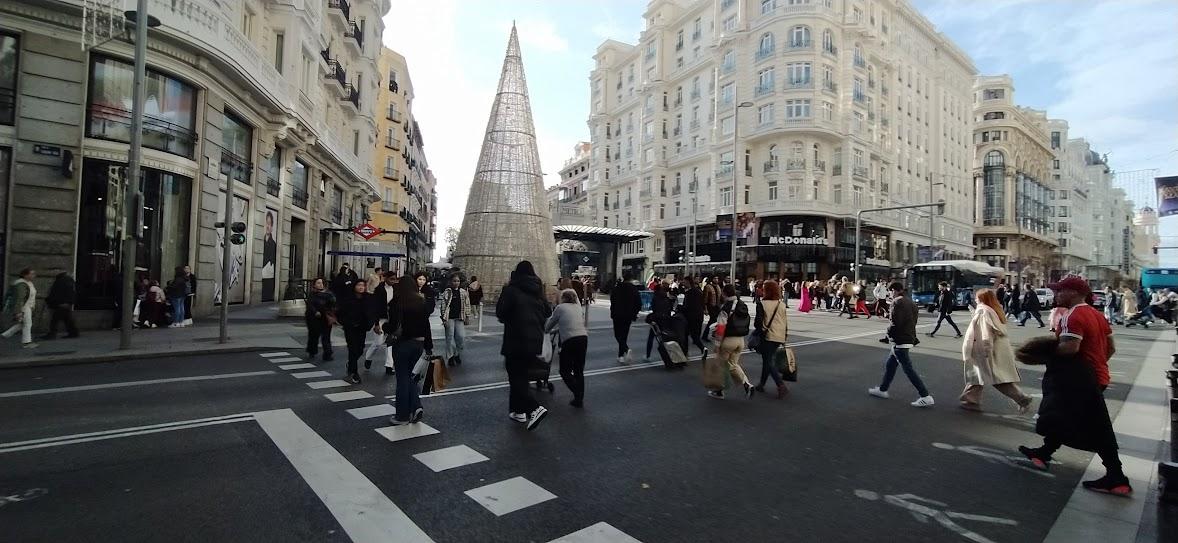The first thing we have to say is that as a general rule, roads are for vehicles, pavements are for pedestrians. In other words, wherever possible, pedestrians must always walk on the pavement and never the road. Similarly, cars should not park or drive on pavements, or park on pedestrian crossings.

A pedestrian is still considered a road user, even when on the pavement, and must still abide by the rules. A person with a bicycle or scooter who is walking with their vehicle are considered a pedestrian.

Of course, there are areas where pavements do not exist, in which case pedestrians can walk on the road, but should do so facing oncoming traffic and take precautions to ensure they are visible, including wearing high visibility clothing during periods of poor visibility. There are also more rules in the case of walking in large groups. There are specific rules both for participants and those who come across certain groups such as military personnel in uniform, groups of schoolchildren, or organised marches.
On the road, as a general rule, covered by Article 65 of Spanish Traffic Law, pedestrians do not normally have priority on the road. That said, drivers have an obligation to drive in such a manner that doesn’t pose a risk to other road users, including pedestrians, who are amongst the most vulnerable group of road users.
Crossing the road should always be done at an official crossing, where provided, as priorities change in those circumstances, subject to certain conditions we will explain.

Generally speaking, drivers have priority over pedestrians except in properly designated pedestrian crossings, when a driver finds pedestrians crossing when turning into another road, even if there is no marked crossing, and when the vehicle crosses a pavement on which there are pedestrians who don’t have a designated area.

When vehicles cross designated zones in pedestrian areas, drivers must give way to pedestrians.
According to Article 124 of Spanish Traffic Law, in areas where there are pedestrian crossings, those who want to cross the road must do so precisely, without doing so in the vicinity, and when such steps are taken, the following rules should also be observed:
If there are light controls at the crossing, these lights must be obeyed by pedestrians as much as vehicles. Pedestrians who do not respect the red light at a pedestrian crossing may be sanctioned by the competent authority.

If there is no traffic light for pedestrians but the movement of vehicles is regulated by an agent or traffic light, you must not enter the road while the signal of the agent or the traffic light allows vehicles to drive through.
In other pedestrian crossings marked by the corresponding road marking, although they have priority, pedestrians should only enter the road when the distance and speed of the approaching vehicles allow them to do so safely. In other words, pedestrians must not simply step out onto the crossing. Although drivers have an obligation to give way, pedestrians have an obligation to ensure that it is safe to cross before proceeding.

When crossing a pedestrian crossing, we must verify that the approaching vehicles have seen us and are slowing down to give way to us. Then we can proceed to cross. Please, never start crossing if you are not sure if drivers have noticed your presence and are going to give way.
Remember that if there is a walkway or crossing next to you, you could be sanctioned for crossing in an improper place. Please, use crossings.

When pedestrian crossings do not exist, it is still possible for pedestrians to cross the road, but again certain rules must be followed. To cross the road outside a pedestrian crossing, pedestrians must make sure that they can do so without risk or undue obstruction.
When crossing the road, they must walk perpendicular to the axis of the road, not delay or stop on the road unnecessarily and not hinder the passage of others.
Pedestrians may not cross squares and roundabouts on the road, and must go around them.
On roads where footbridges are installed there are frequent occurrences of pedestrians who want to shorten their journey by crossing the road instead of using these footbridges. When the installation of a footbridge is planned, it is because it has been verified that there is a high risk of crossing that road at that location, thus giving pedestrians greater safety. If a footbridge is installed, please use it.

All of the details we have not covered in detail are available in the official Spanish Traffic Law publications, which you can find in English on spanishtrafficlaw.es
The post Pedestrians on the Road – Where and how to cross safely first appeared on N332.es – Driving In Spain.





